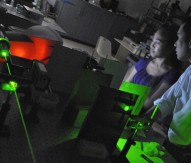
New aviation radar systems developed
A team of engineers from Italy has published a study on a photonics radar. The system uses lasers to produce the radar signal, which is then transmitted through a traditional antenna.
With the hope of avoiding aircraft disappearances such as the Malaysian Airlines Flight 370, researchers are working on new radar that uses short bursts of light to produce a signal that can not only detect an airplane mid-flight, but also cover a wider territory and communicate with the plane.
Paolo Ghelfi, a researcher at the Consorzio Nazionale Interuniversitario per le Telecomunicazioni (CNIT) in Pisa told Australian broadcaster ABC: “We substitute electronics with photonics. The first reason is to increase the precision and flexibility of the radar system.”
He added: “Having a single system that can do a lot of different things allows us to imagine that maybe we will have in the future a way to collect data about speed and altitude along with what’s going on in the cockpit.”
The project is currently undergoing trials at Pisa Airport to track planes, as well as the port of Livorno, Italy to track ships in the Mediterranean. The photonic-based fully digital radar (PHODIR) was funded by the European Research Council.
According to Ghelfi, a photonic radar system can carry more information about an object, as well as getting higher resolution data about the target’s shape and altitude. Experts have said there are engineering bugs to be worked out and that it will be years before photonic radar replaces existing electronic radar systems in commercial aviation.






